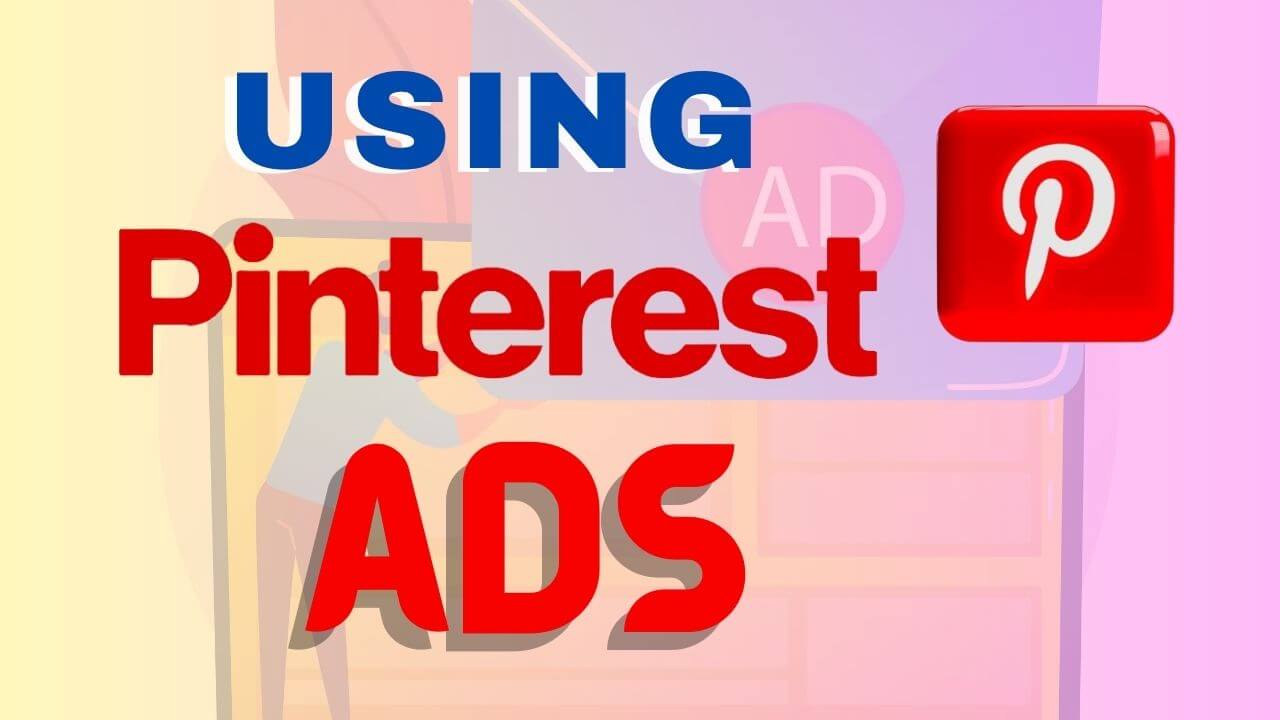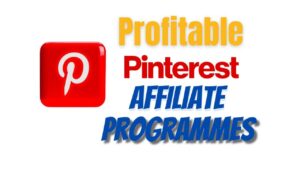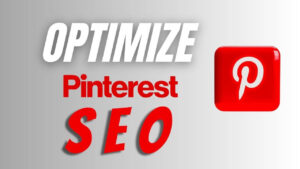Incorporating Pinterest ads into your affiliate marketing strategy can significantly boost the visibility and reach of your affiliate content. Pinterest, as a visual discovery platform, offers a unique opportunity to promote your affiliate products or services to a wider audience beyond your existing followers. This article will guide you on how to effectively utilize Pinterest ads in your affiliate marketing strategy to drive more traffic and increase conversions.
Why Choose Pinterest Ads for Affiliate Marketing?
Pinterest is a highly visual platform with over 400 million active users, making it an excellent platform for promoting affiliate content. Unlike other social media platforms, Pinterest users come with a purpose – they are actively seeking inspiration, ideas, and products. This focused intent provides an advantage for affiliate marketers looking to connect with potential customers who are ready to engage with relevant content.
1. Create High-Quality, Engaging Pins
Before diving into Pinterest ads, it’s crucial to have captivating pins that align with your affiliate marketing goals. High-quality visuals and eye-catching graphics play a vital role in attracting users’ attention and encouraging them to click on your ads. Ensure that your pins are visually appealing and aligned with your brand image.
Tips for Creating Engaging Pins:
- Use high-resolution images or graphics that resonate with your target audience.
- Incorporate bold and attention-grabbing text overlays to convey your message effectively.
- Keep your pin descriptions clear, concise, and compelling to entice users to take action.
- Test different pin formats, such as static images, carousels, or video pins, to see which perform best for your campaign.
2. Identify Top-Performing Affiliate Content
To maximize the effectiveness of your Pinterest ads, focus on promoting affiliate content that has already performed well organically on the platform. Analyze your Pinterest analytics to identify pins and content with high engagement, saves, and click-through rates. Promoting content that has resonated with your audience organically increases the chances of success with paid ads.
3. Set Clear Objectives
Clearly define your objectives for running Pinterest ads. Determine whether you want to increase website traffic, drive affiliate link clicks, or boost sales. Having clear goals will guide your ad campaign’s direction and help you measure its success effectively.
4. Use the Pinterest Ads Manager
Pinterest Ads Manager is a powerful tool that allows you to create, manage, and optimize your ad campaigns. Within the Ads Manager, you can choose your ad objectives, target specific audiences, set budgets, and schedule ad placements. This user-friendly interface enables you to have full control over your ad campaigns.
5. Target Relevant Audiences
Pinterest offers various targeting options to reach your ideal audience effectively. Utilize audience targeting based on interests, demographics, keywords, or retargeting options. Tailoring your ads to the right audience ensures that your content reaches the users most likely to engage with your affiliate offerings.
6. Utilize Keywords Strategically
Keywords play a crucial role in making your ads discoverable to the right audience. Incorporate relevant keywords in your ad titles, descriptions, and targeting options. Use keywords that align with your affiliate products or services and resonate with your target audience’s search queries.
7. A/B Test Ad Creatives
Experiment with different ad creatives to determine what resonates best with your audience. A/B test variations of your pins to identify the most effective design, call-to-action, and messaging for your affiliate ads. Analyzing the performance of different ad creatives will help you optimize your campaign for better results.
8. Allocate a Budget Wisely
Set a budget that aligns with your objectives and continually monitor the performance of your ad campaigns. Start with smaller budgets to test your strategies and gradually increase the budget for well-performing ads. This approach ensures you are investing in what works best for your affiliate marketing goals.
9. Monitor Ad Performance
Regularly review the performance of your Pinterest ads through the Ads Manager. Pay attention to key metrics such as impressions, click-through rates, conversions, and return on investment (ROI). Use this data to identify successful strategies and make data-driven decisions to optimize and refine your ad strategy.
10. Comply with Pinterest Guidelines
To avoid any potential issues with your ad account, ensure your ad content complies with Pinterest’s advertising guidelines. This includes proper disclosures for affiliate links and adhering to Pinterest’s ad policies. Transparency and compliance are essential to maintaining a positive user experience and building trust with your audience.
By implementing these strategies and best practices, you can effectively incorporate Pinterest ads into your affiliate marketing strategy, expand your reach, attract new audiences, and drive more traffic to your affiliate links.
Tips for Running Successful Pinterest Ad Campaigns
Running successful ad campaigns on Pinterest requires a thoughtful approach and continuous optimization. Here are some essential tips to help you achieve success with your Pinterest ad campaigns:
1. Define Clear Objectives
Before launching your ad campaigns, establish clear objectives based on your affiliate marketing goals. Having specific and measurable objectives will guide your overall strategy and enable you to measure the success of your campaigns effectively.
2. Understand Your Audience
Get to know your target audience thoroughly. Understand their interests, preferences, and pain points to create ad content that resonates with them. Utilize Pinterest’s audience targeting options to reach the right people with your affiliate promotions.
3. Create Compelling Visuals
Visuals are the heart of Pinterest. Design visually stunning and captivating pins that showcase the products or services you are promoting. High-quality and appealing visuals will attract users’ attention and increase the likelihood of engagement.
4. Craft Captivating Descriptions
Write compelling and concise descriptions that complement your ad visuals. Use persuasive language to entice users to take action, such as clicking on your affiliate link. Including relevant keywords in your descriptions will also enhance the discoverability of your ads.
5. Include Clear Calls-to-Action (CTAs)
Incorporate clear and actionable CTAs in your ad content to guide users towards the desired action. Whether it’s “Shop Now,” “Learn More,” or “Get the Deal,” the CTA should prompt users to click on your affiliate link or visit your website.
6. Test Different Ad Formats
Pinterest offers various ad formats, including Promoted Pins, Carousel Ads, and Video Pins. Experiment with different formats to see which ones perform best for your affiliate marketing goals. Video pins, for instance, can be particularly effective in showcasing products or providing tutorials.
7. Set Realistic Budgets
Allocate budgets that align with your objectives and test the performance of your ad campaigns. Start with smaller budgets and gradually increase as you identify successful strategies. Regularly monitor the performance metrics to optimize your budget allocation.
8. Track and Measure Performance
Use Pinterest Ads Manager to track the performance of your ad campaigns. Pay attention to metrics like click-through rates (CTR), impressions, conversions, and return on ad spend (ROAS). Analyzing this data will help you identify top-performing pins and audiences to optimize your strategies.
9. Optimize Based on Data
Use the data from your ad campaigns to optimize and refine your strategies. Identify top-performing pins and target audiences, and allocate more budget to high-performing ads.
10. Maintain Transparency
Be transparent with your audience about your affiliate marketing efforts. Clearly disclose your affiliate partnerships to build trust and credibility with your followers.
11. Align with Seasonal Trends
Leverage seasonal trends and holidays to create timely ad campaigns. Aligning your promotions with specific events can increase relevance and engagement.
12. Test Landing Pages and Conversion Funnel
Ensure that the landing pages linked to your ads are optimized for conversions. Test different landing pages and optimize the conversion funnel to maximize the chances of users completing the desired action.
By following these tips, you can run successful Pinterest ad campaigns that effectively promote your affiliate products or services. Remember to continuously analyze data, optimize your strategies, and provide value to your audience to achieve long-term success in Pinterest affiliate marketing.


























Its excellent as your other content : D, thankyou for posting.
Simply a smiling visitor here to share the love (:, btw outstanding design and style. “Everything should be made as simple as possible, but not one bit simpler.” by Albert Einstein.
I was just seeking this information for a while. After 6 hours of continuous Googleing, finally I got it in your website. I wonder what is the lack of Google strategy that do not rank this type of informative web sites in top of the list. Generally the top websites are full of garbage.
I went over this internet site and I believe you have a lot of great info , saved to my bookmarks (:.
You completed various fine points there. I did a search on the theme and found nearly all folks will consent with your blog.
I do love the way you have framed this particular difficulty plus it does provide me some fodder for consideration. However, coming from just what I have experienced, I simply just hope as the actual remarks pile on that individuals continue to be on point and not start upon a soap box associated with some other news du jour. Yet, thank you for this superb piece and while I do not necessarily concur with the idea in totality, I value your perspective.
Very interesting information!Perfect just what I was searching for! “If you could choose one characteristic that would get you through life, choose a sense of humor.” by Jennifer Jones.